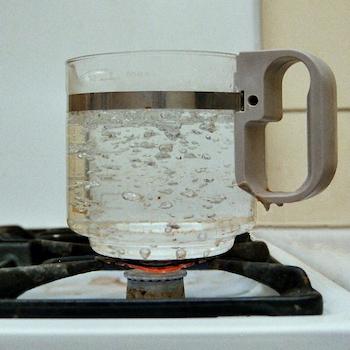We have all heard the saying “Too much of a good thing.” This applies to foods, drinks and many kinds of activities. This saying also applies to chemicals we “hear” about in our daily news.
All chemicals are toxic at some level – some can cause harm at very small concentrations, while others need a large amount before there is a danger to human health. For example, ingesting large amounts of dihydrogen monoxide can cause low blood sodium concentrations leading to nausea, fatigue, confusion and seizures, and even death, but few people would want to ban di-hydrogen (H2) mono-oxide (O)---also known as “water”--- from public sale and or other uses, since water is safe and necessary when we drink a normal amount.
For many chemicals, however, it’s difficult to know what level causes or does not cause harm. For example, most people know arsenic as a poison, but may not know that many foods contain small amounts of arsenic, since it is a part of our environment. How much arsenic can people eat and not be harmed?
You might remember the scare a while back about too much arsenic in apple juice. The U.S. Food and Drug Administration analyzed a large number of apple juice samples for arsenic and compared them with their estimate of its safe dose, the level at which no harm was expected. The FDA concluded that the very low levels of naturally occurring arsenic in apply juice were not a public health risk and the juice was safe for consumption. Eventually FDA developed guidance for manufacturers.
Because of this difficulty, toxicologists have been trained to make a determination of levels where a chemical causes harm and where it does not, generally in experimental animals. These determinations are then evaluated by scientists who specialize in risk assessment to make a judgment about the safe dose or safe level of the chemical to humans. These risk scientists work in governments, industries, consultancies, and, to a less extent, universities and non-governmental organizations (NGOs).
These safe levels go by different names, a common one in the US is the reference dose (RfD). But despite different names and slightly different approaches, risk scientists all follow three basic steps:
- Toxicity data are reviewed from laboratory studies on animals and information from human investigations to confirm the levels of exposure that show harm and those which do not.
- Uncertainties in the data and analyses are then considered, particularly when using animal studies, and a judgment is made of a chemical exposure that would be safe, even for sensitive groups of people (like children or the elderly).
- New research may be requested of toxicologists to resolve uncertainties or unclear data or analysis.
If you want to learn more about safe levels of chemicals, or how they are developed, many of the government agencies provide a wealth of information. For example, the U.S. National Library of Medicine, has useful toxicity information about chemicals on its websites. The U.S. Environmental Protection Agency also has a wealth of information on many of its websites. Many nonprofit groups have also been formed to study toxicology and to share information, for example:
- Society of Toxicology has its annual meeting March 15-19, 2020 in Anaheim, CA
- Toxicology Excellence for Risk Assessment assesses the risk to chemicals and shares this information
- Toxicology Education Foundation has produced an excellent 15-minute video called "Is It Safe?" that provides information for the general public about chemicals and risk so that you can make good decisions associated with everyday products.
These are only five examples of many groups that work on chemicals and their safety. All of these groups work on behalf of the public to keep us safe.
Authors: Michael L. Dourson, PhD., DABT, FATS, FSRA and Bernard Gadagbui, MS, PhD, DABT, ERT of Toxicology Excellence for Risk Assessment (TERA)




